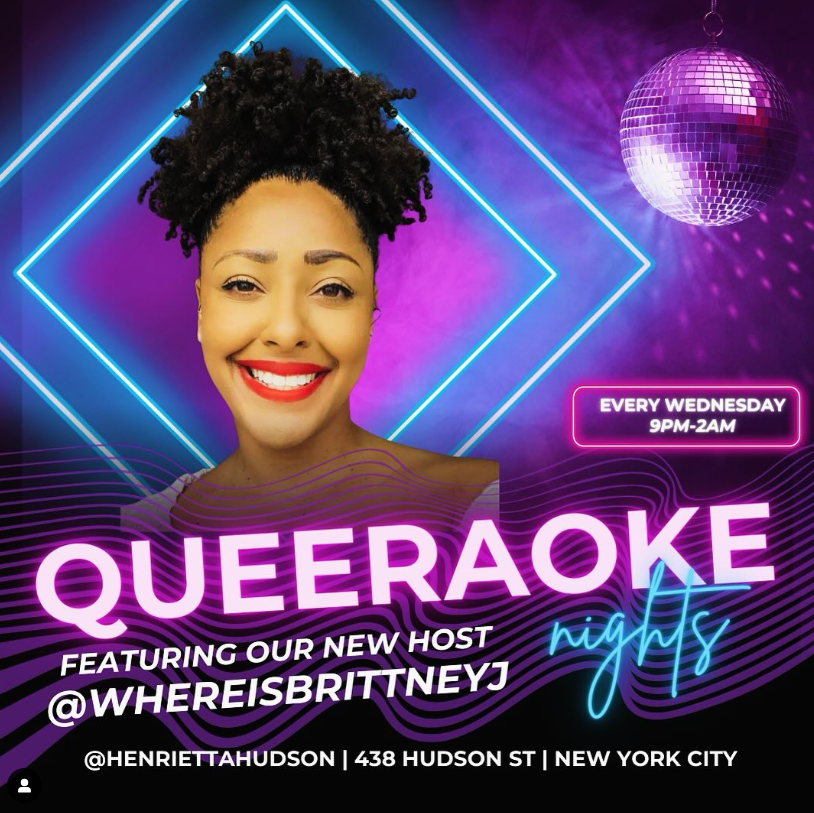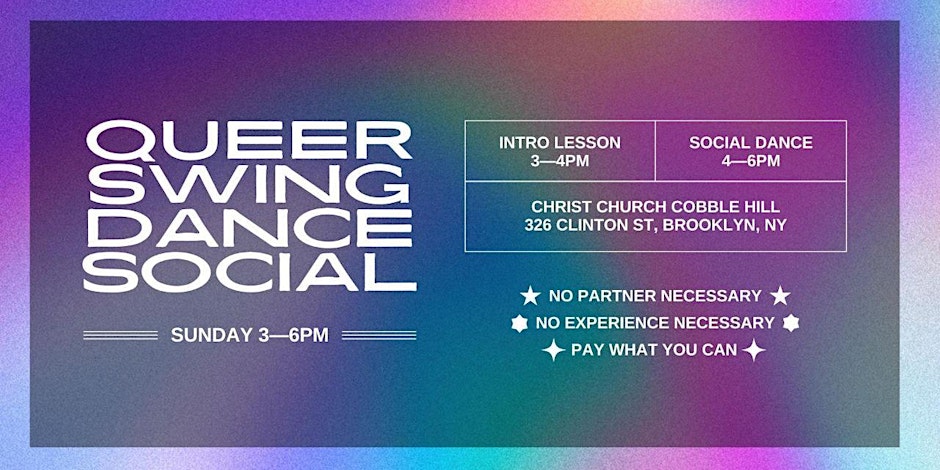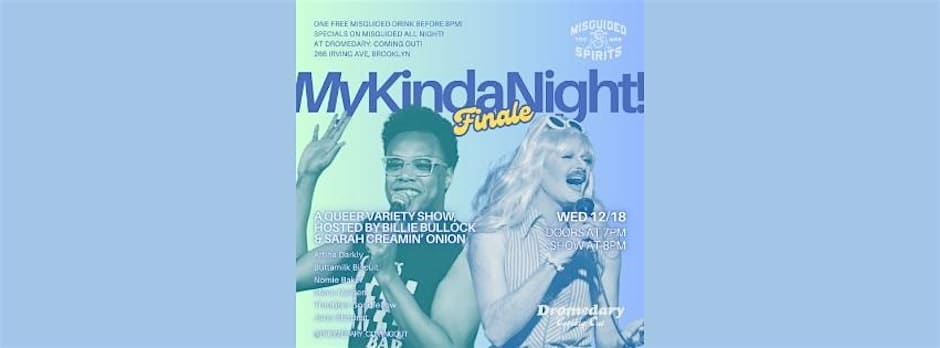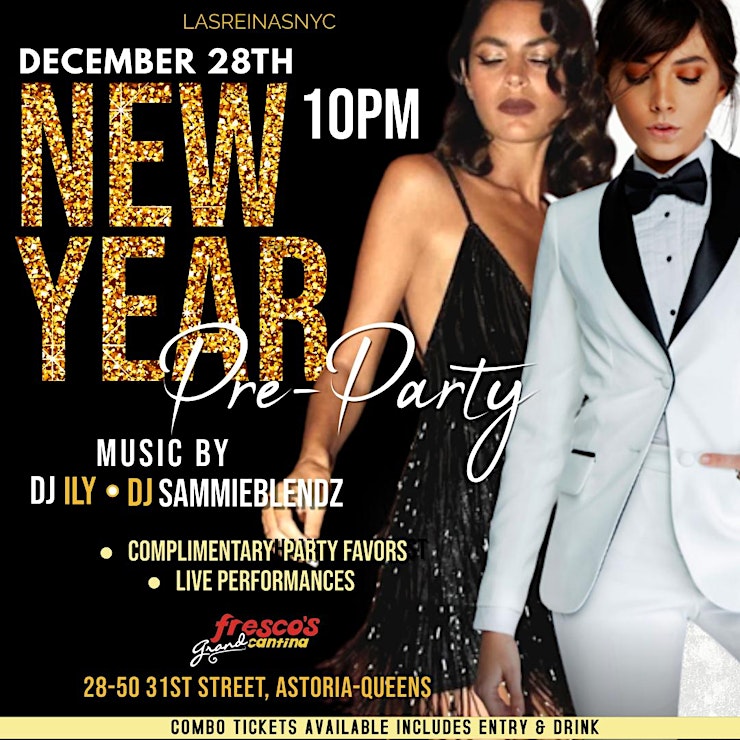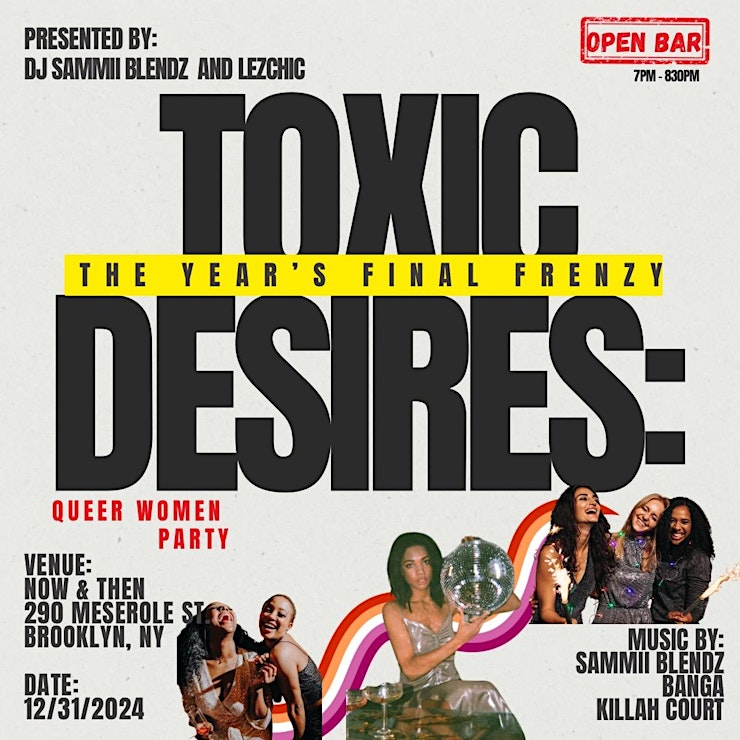Holiday films can be a tricky genre for queer people. Besides the fact that there aren’t many LGBTQ+ holiday movies and the ones that do exist can veer towards corny and heteronormative, the themes of both holidays and family can be painful or straight-up triggering for queer viewers.
Many queer folks struggle with returning home for the holidays and seeing family, and we aren’t really given the opportunity to see ourselves on screen to understand how to navigate this time. How do you make your way through a holiday dinner where you’re closeted to your extended family? What do you say to the homophobic ex-friend from high school that you run into at the grocery store? How do you set a healthy boundary and decide not to see your family when every movie, TV show, and piece of media tells you home is the only place to go for the holidays?
Queer viewers have to be well-versed in finding subtext or reading into different genres to see ourselves in movies, which is why we have to dig deep when viewing holiday films that can feel painfully straight. Perhaps this is because family is at the heart of holiday movies and while the concept or realization of family has changed over the years, along with the visibility of queer people, the idea of “family values” is still so often rendered as a seemingly exclusively hetero practice. Of course, that’s not the case, but it seems like many holiday movies haven’t gotten the memo yet.
If we go back to the very first holiday movie – the 1898 British film Santa Claus – we can see the first appearance of both the visual and figurative tropes that have continued to this day. In the film, two kids excitedly look up the chimney, waiting for someone or something. Their nanny ushers them into bed and as they sleep, Santa prepares a tree and a bag of toys on the roof. Santa comes down the chimney and leaves gifts for the kids before stealing away into the night. They wake up to find their presents and flip out the way kids have done all throughout history.
This movie marks the first appearance of Santa Claus on screen and certainly we’ve watched him come down countless chimneys in the decades since. It also establishes the relationship between Santa and children that has also been explored in various films. But if we look deeper, we can see something underneath all of that, which has continued to define the holiday genre more so than traditional Christmas images: longing.
This short clip opens with the kids eagerly looking, waiting, and hoping for Santa because their goal is to get presents. The arc of this story is wanting something and so the movie can follow one of two different directions: Either they get what they want or don’t. In other words, their longing is met or it isn’t. If we look at holiday films across the years, they often revolve around longing of some sort and it usually has to do with family – finding acceptance, forgiveness, support, or whatever it may be – or within community in a larger sense. So, if we consider family to be the “heart” of holiday movies, then we could see longing as the blood. While holiday films may vary in their themes of love, sharing, and giving, as well as how much they do or don’t engage with Christmas imagery, they usually have a common driving force: the longing for family or community.
We may associate longing with romance or eros but I wonder if it doesn’t begin with family. For many people, before we’re even aware of romantic love, there’s the longing to be seen and understood by our families, who in some ways, know us best (key word being “some”). And yet, in many ways, they know us the least. Perhaps longing is born in that space between being known and unknown.
Family is complicated — to say the least — for everyone. But it can be something else for queer people, many of whom have been kicked out of their families, disowned, or conditionally “welcomed” home for the holidays so long as they keep their identities hidden for the sake of everyone else’s comfort.
For many queer people, holidays then are all about chosen family; why torture yourself with a five-hour dinner next to homophobic Uncle Mark when you could go with your family – the ones who unconditionally love and accept you – to a gay bar and sing Christmas tunes to your heart’s delight? This extends to holiday films as well, as we may be watching them with the lens of chosen family rather than the one of origin that these movies so often represent.
So, let’s look at how this idea of family and the longing underneath it transforms when looking at holiday movies through a queer lens.
Elf – Buddy the Elf is a human, who wound up in Santa’s toy bag as an infant. He’s grown up in Santa’s workshop believing that he’s an elf, but there has always been something different about him: He towers over the other elves and can never make as many toys as anyone else. When he finally discovers that he’s a 30-year-old man, he sets off to NYC to find his real daddy.
For any viewer, Elf is about acceptance. But LGBTQ+ audiences can also see Buddy as one of “our own,” which subtly changes how we can read his journey. His father and others pressure him to grow up or assimilate and stop expressing his overt joy and affection, but Buddy doesn’t waver.
He longs for his father’s approval but he doesn’t compromise on who he is, which is somewhere between a human and an elf. For many, queerness is exactly that: the experience of being in between spaces, neither here nor there, and it’s in those liminal spaces that we find or create our families. Buddy will never fully be part of the human world, nor will he be of the elf one, so instead, he creates a family that spans the two spaces rather than denying one or the other just to fit in.
The Muppet Christmas Carol – Ebeneezer Scrooge has bah humbuged his way through life without ever having experienced a moment of joy. He gets visited by the ghosts of Christmas past, present, and future, who show him the darkness of his own life and give him the chance to change in this most excellent Muppet treatment of Charles Dickens’ classic.
The question is, why is Scrooge such a, you know, scrooge? Some might say it’s because he had trouble making friends or his ex dumped him because he kept putting off their marriage to save money but queer viewers might see that Scrooge is deeply closeted. What are his defining characteristics? He’s lonely, angry, and lives in scarcity rather than abundance, which can be the marks of people’s closeted experiences. He shuts others out while secretly longing for connection with them. In other words, the man is living in denial. Plus, he’s got that silk nightgown that doesn’t exactly scream heterosexuality.
By the end, Scrooge declares that he will live in the past, present, and future. He will be whole. He will not be compartmentalized. He will be himself a.k.a. not closeted. Many may see Scrooge finding family with others at the end, which shows his arc or transformation. But looking at him through a queer lens, the change isn’t that he embraces others; it’s that he finally accepts himself. He learns how to meet his own longing and therefore can connect with others.
And of course, it’s the presence of the Muppets that makes this one of the best holiday movies ever and gives it that extra layer of queerness. The Muppets are and always have been queer teachers with their radical acceptance and love of individuality.
It’s A Wonderful Life – It’s Christmas Day and George Bailey has decided to end his life because it’s super disappointing and he feels like everyone would be better off without him. The angel Clarence examines George’s life to see how he got to this point and decides to show George just how things would have been if he had never been born.
What brings people back to this film repeatedly is perhaps the message that no matter how unfulfilling you feel your life is, it still matters. You still matter. As the angel says at the end, “Each man’s life touches so many other lives. When he isn’t around he leaves an awful hole, doesn’t he?” This feels like an apt description of the networks we can form with our chosen families and the “awful hole” that comes when someone leaves.
George sees himself as an “explorer” and he dreams of a life where he can be his full, unbridled, I’m-never-getting-married, I-hate-heteronormative-expectations self. His desire to travel the world is really a desire to find a home of his own making. Like a gay Goldilocks, he’s looking to find what’s right and have adventures along the way. Too bad those cursed heteronormative expectations keep trapping him. He’s miserable but it doesn’t matter because he’s doing what a “straight” man is “supposed to.” He’s a man of fantasy, who’s forced into reality, and it’s this gap between the two that reads as most queer.
It’s like when you’re queer and feel subjected to the outside voices of everyone else – like your family – and then finally, you get away or put enough distance between all that, and you can just breathe and be yourself. You can pursue those fantasies, whatever they are. That’s George Bailey’s desire and one that never gets to be fulfilled, which is why the ending – although it’s technically in family, a place of greater self worth, and a return to “home” a.k.a. heteronormative expectations – feels depressing and not at all aligned with the “feel good” and “gentle” tags that Amazon has placed on this movie.
The movie was made in the height of the Hays Code era of Hollywood’s self-censorship, which lasted from 1934-1968. At this time, movies had to adhere to a “moral” code, which meant nothing explicitly gay or sexual could be shown. A movie had to maintain “the moral standards of those who see it,” so this one had to end with the return to the family and family values but that doesn’t make it easier to bear.
George has a new lease on life because he realizes that yes, he does matter. And he does! But he’s still living a life that doesn’t actually have any space for the person that he is and wants to be. He’s back in the family but his longing to explore himself and live the life he wants hasn’t actually been fulfilled. It’s like the opposite of what queer folks are trying to do when we go out into the world, so this may be a wonderful movie, but a wonderful life, it is not.
Love, Actually – In this ensemble movie of 10,000 storylines, a group of disparate British people try to counter their holiday loneliness by finding love, which comes in some unexpected forms.
I like to brag that I can find the gay reading of anything but goddess help me if Love, Actually isn’t one of the straightest movies of all time. And yet, it’s the only holiday movie that I watch every year. Is it pure nostalgia? Or is it a masochistic punishment to sit through one of the movies (along with The Notebook) that made my closeted teenage self feel like I never would find love? I would watch Love, Actually and then journal about how no man would ever look at me the way Colin Firth looks at a Portuguese woman with whom he literally can’t communicate but somehow still falls in love with.
There’s the key though: Love, Actually is really about longing. Yes, it’s about people finding love and community but what’s driving them to do so? Their longing. And that is something this gay viewer does understand – I long, constantly. I have like eight crushes as we speak, who don’t know I’m pining for them. Longing is the sustenance for my fantasy life and so it is for many of us queer folks, who are forced to live in our heads, where it’s safer.
Consider Love Actually’s Sarah, who pines for her hot coworker Karl for years. But when given the chance to make that fantasy reality, she doesn’t. She can’t. It’s too scary, too unsafe. And more than that, she doesn’t know how. While many queer folks may have a PhD in fantasizing, we’re not always given a basic education – or even the “permission” — to realize these dreams for ourselves.
The longing for companionship – romantic, platonic, familial – is a universally human one. But the intense depth of longing that all of the characters feel in this movie – the pining, really – feels gay. Sapphic, actually, if we consider Sappho as the progenitor of all longing and yearning. Maybe we have her to thank for the existence of Love, Actually.
The Family Stone – Liberal business bro Everett Stone brings his conservative and uptight girlfriend Meredith home to his super liberal but super judgmental family. The Stones do not accept Meredith at all, so she calls her free-spirited sister Julie to come break the tension. Julie hits it off with Everett, while Meredith seeks solace in his brother Ben.
The Family Stone falls into the holiday movie sub-genre of “going home to your wacky family,” which includes its own subcategory of “adults regressing into teenagers around their family” or as I like to call it, “mom, STOP.” The heart of these movies is the experience of being around a group of people who know you but who haven’t been able to update their visions of you, which is part of the reason you regress or roleplay that exact vision.
I don’t identify with Meredith per se – after all, she does initiate one of the most uncomfortable dinner scenes ever when she tells the Stones that no parent would wish for their kid to be gay, while sitting across from Everett’s gay brother and his partner – but her journey can be seen as a queer one of letting go of what you’ve learned to make space for something new. And in the end, she finds a family where she’s seen as the person she is, not just as an idea that others have of her and not just as her past self.
The family that Meredith finds looks nothing like the concept of “family” as she expected it to be, even though it includes her actual sister. It’s a new type of family that is made up of blood relatives, but everyone has gone through a shift because of Meredith (and matriarch Sybil). This is a group of people who are choosing now to be family in a way that they didn’t before.
There’s both joy and pain in being an outsider because oftentimes, you can see things that those on the “inside” can’t. Meredith’s beliefs and sense of self call everyone else’s into question and challenges what they take for granted, which can often be a role that a queer person occupies. Whenever we see someone or something outside of what we’re comfortable with or believe to be true, right, or whatever other false certainty, it shakes the foundation a little bit. You may not change your beliefs but perhaps now there’s a question mark where there was once a period.
Holidays are THE time to shake things up because emotions are high, spaces are confined, and time essentially collapses in on itself, particularly for those returning to their family home and sleeping in their childhood bedroom. Movies about going home for the holidays are often about an outsider going in and by virtue of their outsiderness and desire to just make it through the day – whether they’re a new partner or the black sheep – wind up changing what that “in” looks like.
But it’s reasonable to see these movies as exclusive in their supposed inclusivity. Perhaps not everyone has a family of origin or home to go to or if they do, that acceptance may be just a fantasy of the movies and not reality. Unlike in the movies, our longing may not always be met in a neat and tidy way, if at all. So, I try to hold onto the message that matters: Family is where people are accepted as they are, not as who you want or believe them to be. Longing can be fulfilled in unexpected places and ways, outside of what we’re taught.
So, I watch holiday movies with the lens of a chosen family rather than family of origin, even though I love the latter very much – unconditionally, actually. But my chosen family has shown me what that process of unconditional love looks like and what it means to create a family for yourself, for and with others. It makes these intensely heteronormative stories more bearable… at least until we get an actually good cheesy gay holiday movie.















